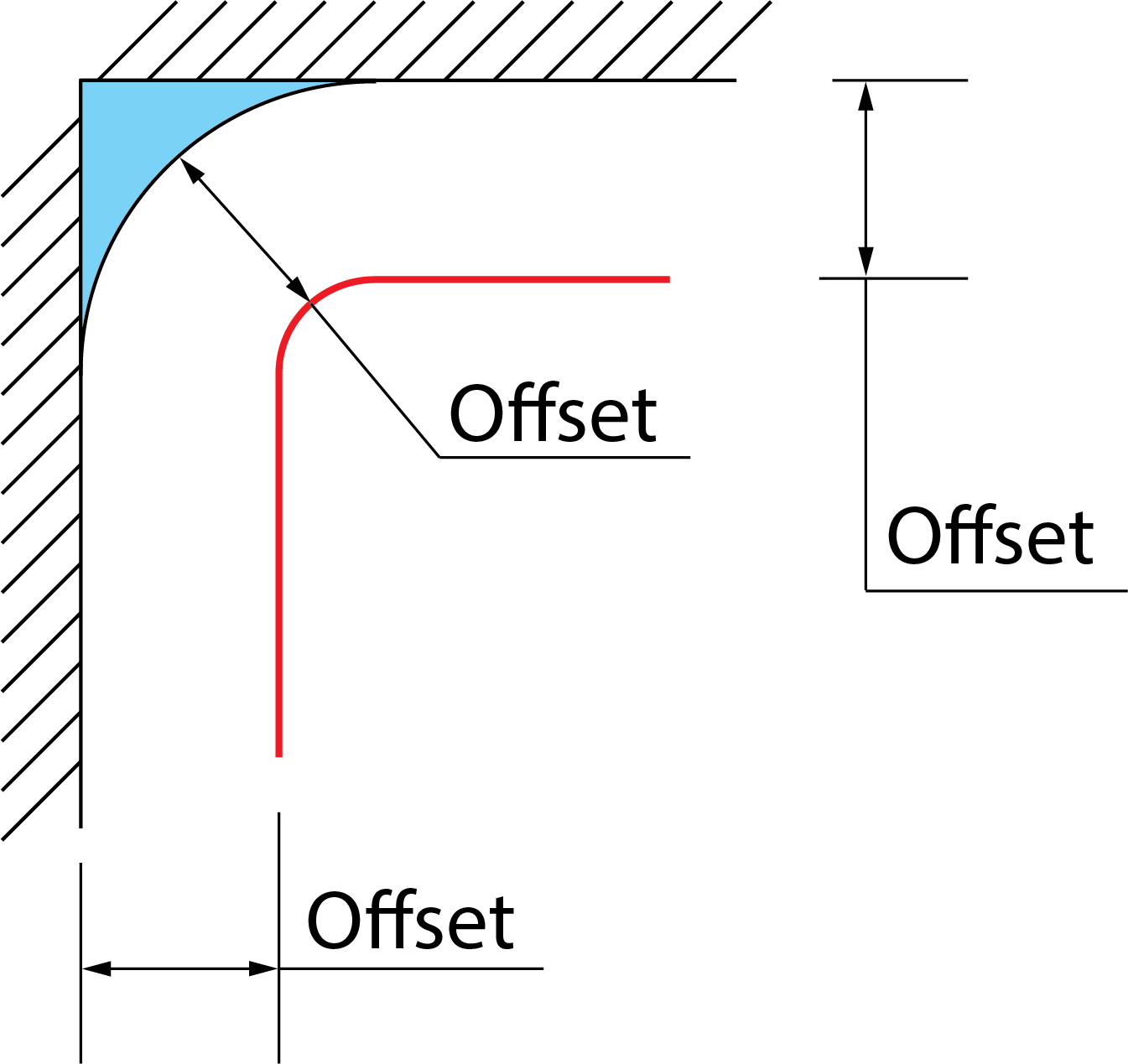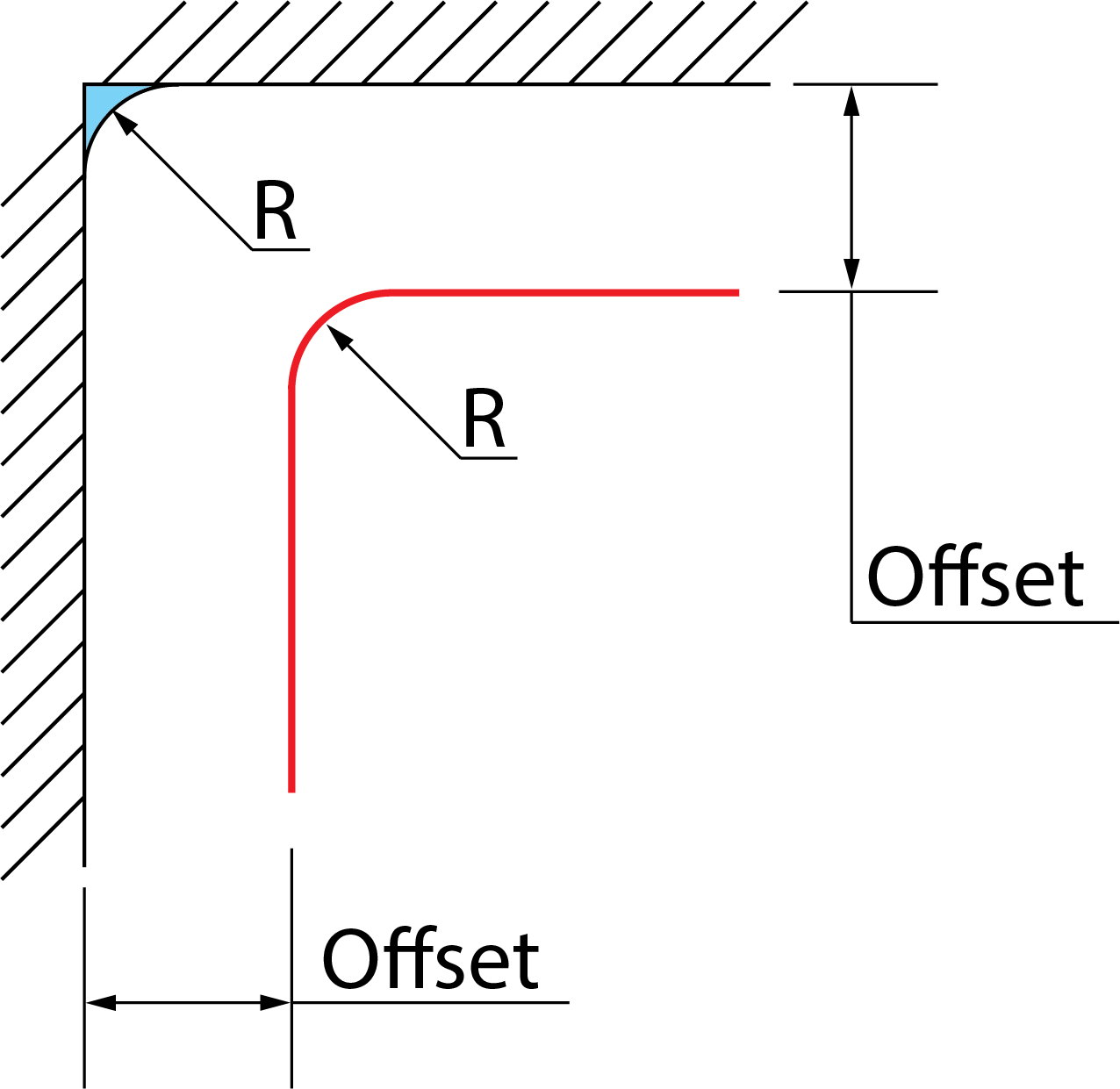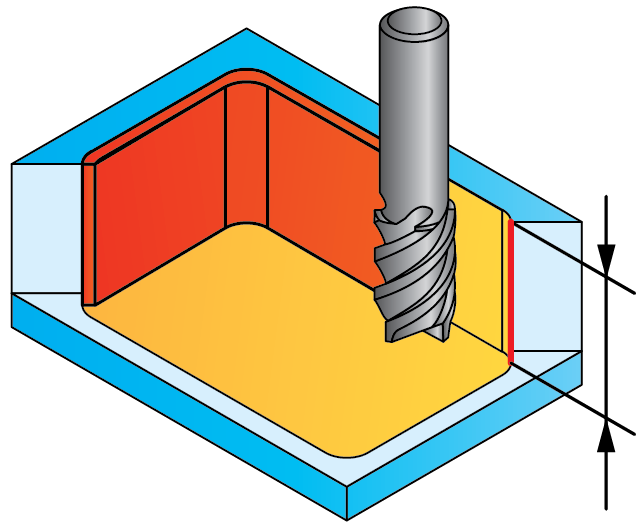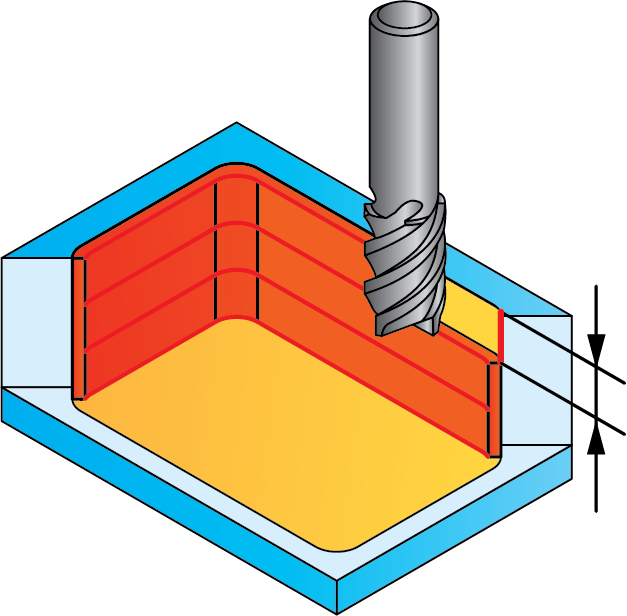Technology page
This page enables you to define the technological parameters of the pocket machining.
Pocket machining technology
Choose the pocket machining technology from the list.
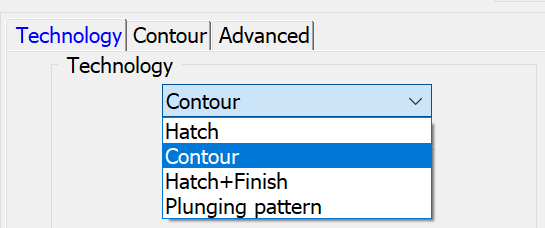
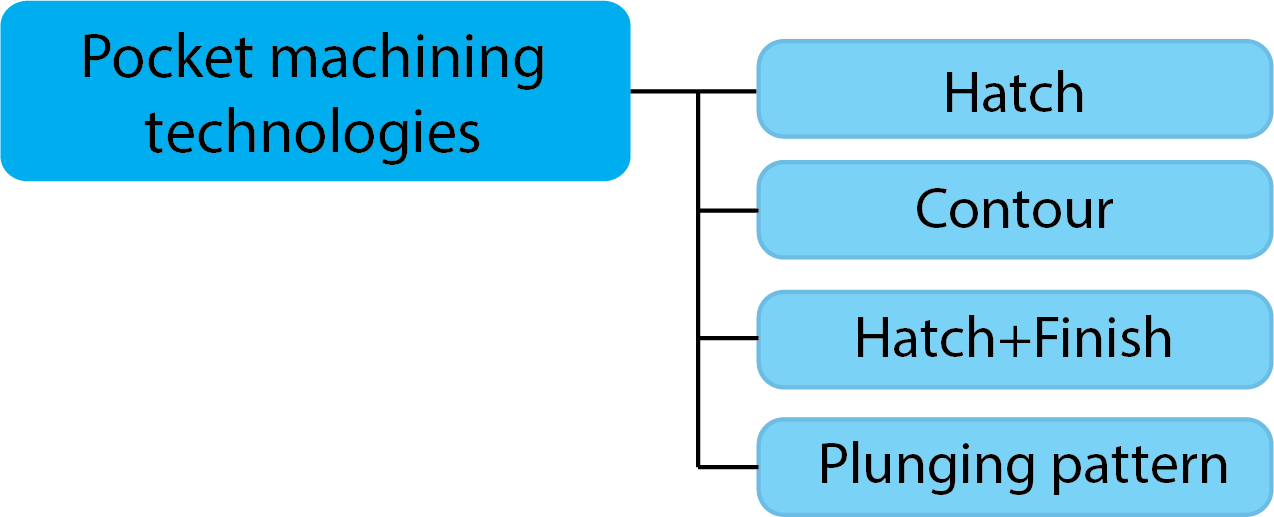
Hatch mills the pocket in a linear pattern.
Contour machines the pocket in a round pattern.
Hatch+Finish mills the pocket in a linear pattern and cleans up the profile on each cutting depth.
Plunging pattern - the tool moves up and down in a drilling motion, travelling inside the pocket.
Additional parameters of the chosen technology appear under a separate tab with the same name. Switch to the tab to define the additional parameters.
Open pocket machining
The Open pocket tab is enabled only when the pocket geometry contains open edges.
More...
Complete Z-level
This option enables you to define the order of Z-levels machining when several pockets are machined in a single Pocket operation.
When the Complete Z-level check box is not selected, SolidCAM machines all the Z-levels of the first pocket and then starts the machining of the next pocket.
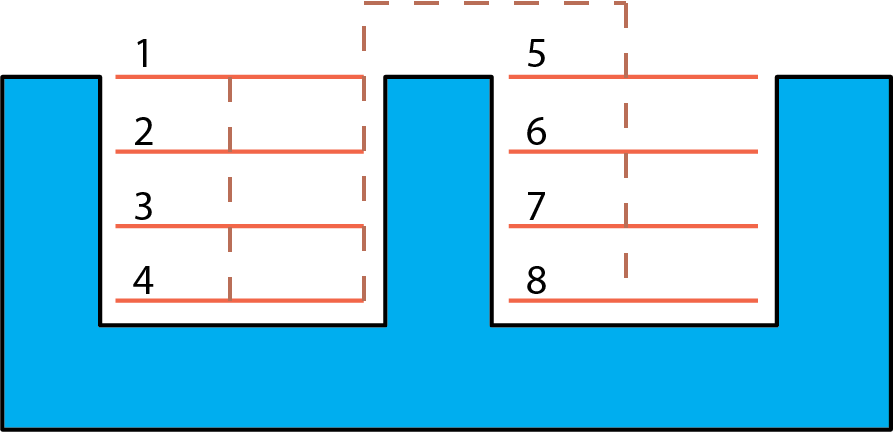
When the Complete Z-level check box is selected, the machining is performed by the Z-levels; SolidCAM removes material at a specific Z-level in all pockets and then moves to the next Z-level.
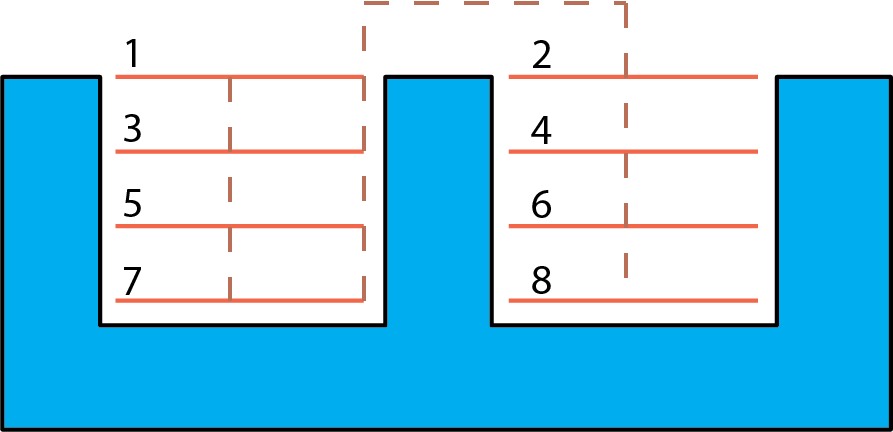
Overlap
This section defines the Overlap of adjacent tool paths in the milling of the pocket. It can be defined as a Percentage of the tool diameter or as a Value.
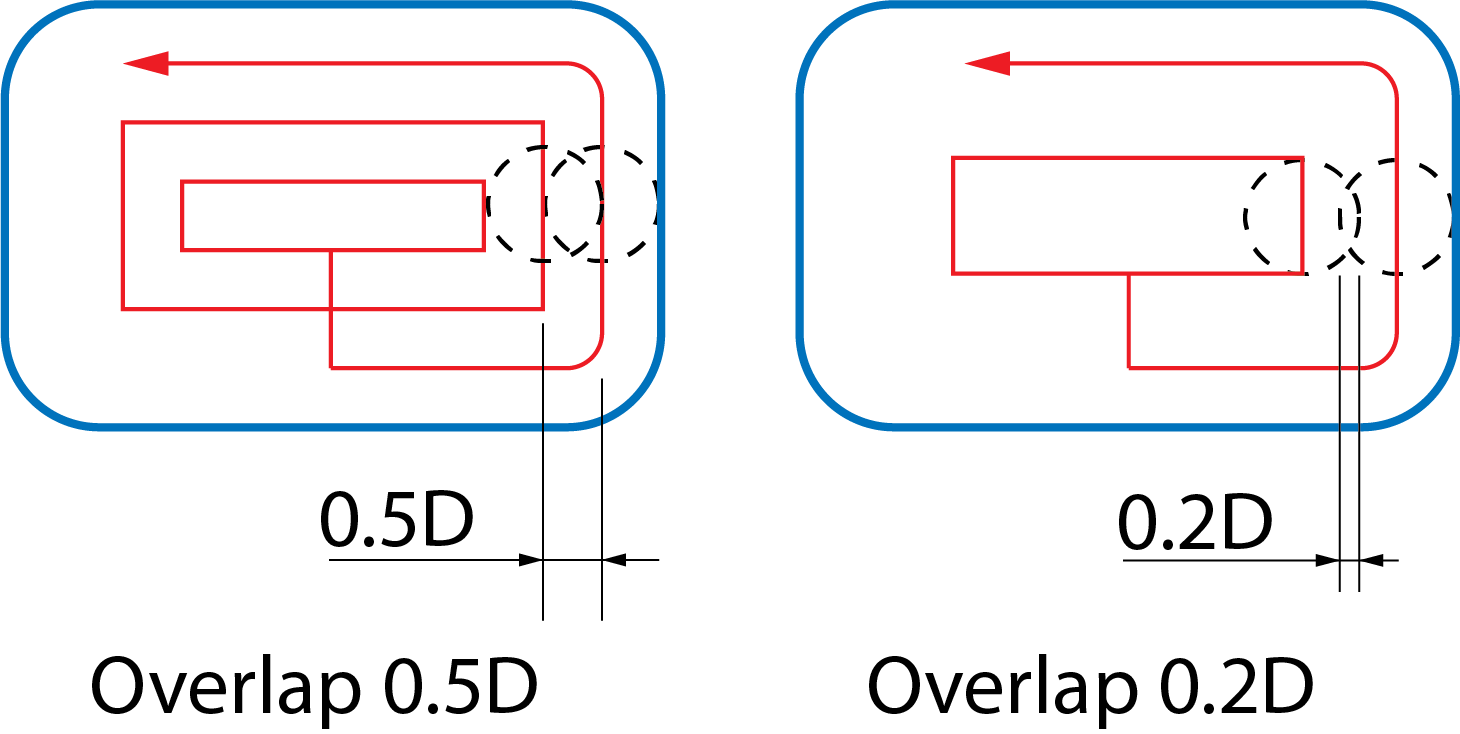
This option enables you to generate the hatch tool path spaced evenly with the automatically calculated Overlap value, which is nearest to the specified Min. Overlap value but not smaller than this value.
When this check box is not selected, the distance between the last pass and the one before it can be smaller than that between all of the other passes.
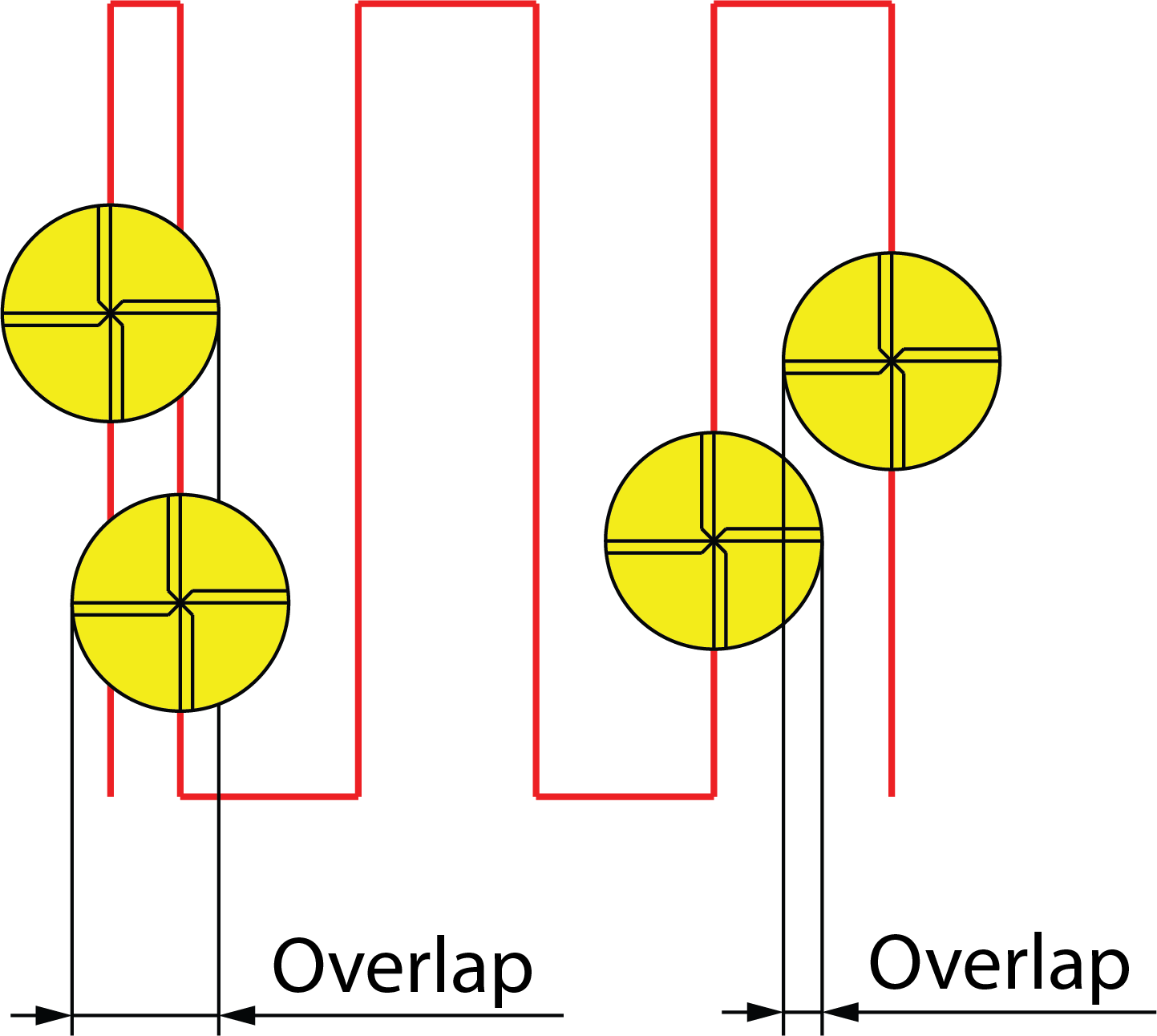
When this check box is selected, the evenly spaced hatch tool path is generated. The overlap between two successive passes is not smaller than the specified Min. Overlap value.
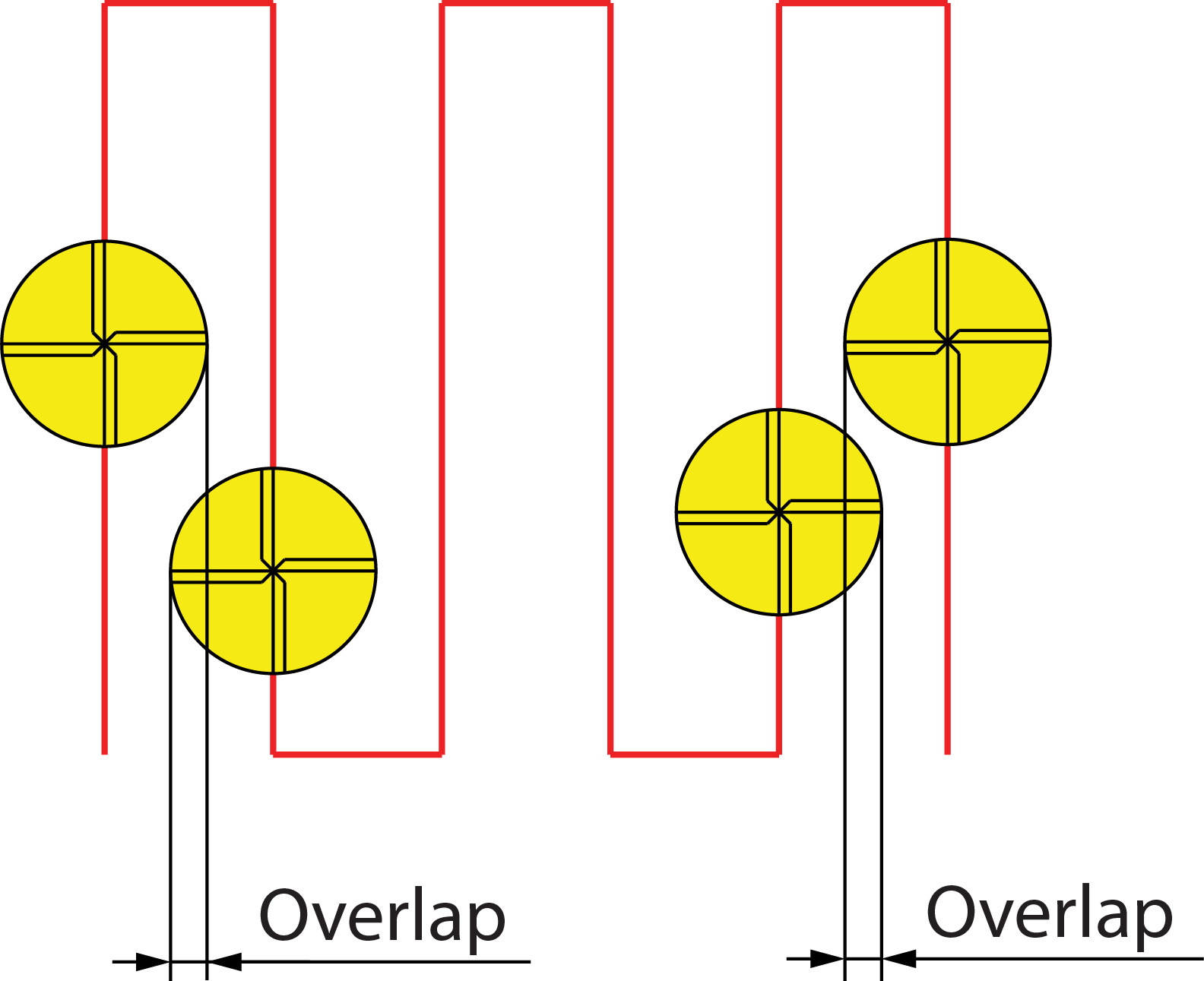
Fillet size for last cut
This option enables you to add a radius to a sharp corner without changing the geometry.
More...
Offsets
To perform the rough machining of the pocket, you have to specify the offsets on the pocket geometry that will be removed with the finishing cut.
Wall offset – defines the offset that will remain on the pocket walls after the roughing cut.
Island offset – defines the offset that will remain on the pocket islands after the roughing cut.
Floor offset – defines the offset that will remain on the pocket floor after the roughing cut.
Show Geometry on operation editing in the SolidCAM Settings enables you to view the closed and open edge offsets in real-time.
Finish
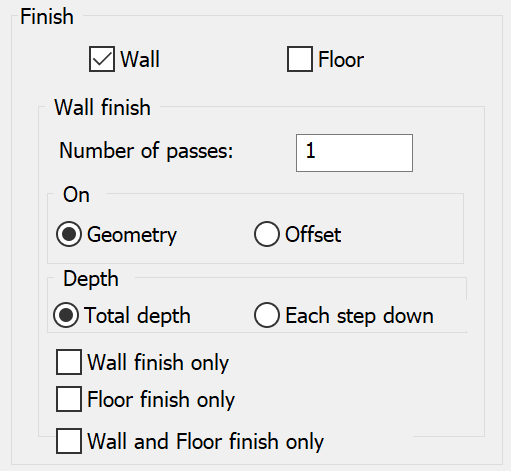
This section enables you to perform the finish machining of the pocket.
The Wall check box enables you to perform finishing of the pocket walls. Only walls and islands are finished on the contour. The pocket depth is reduced by the specified floor offset.
The Floor check box enables you to perform finishing of the pocket floor. The finishing cut is executed to remove the floor offset. The specified wall and island offset remain on the pocket contour.
Wall finish
The Number of passes value enables you to define how many finishing passes will be performed.
This section contains two options to control the material removal on the last finishing cut.
- On offset: The finish path is executed at an offset equal to the sum of the tool radius and the finish offset from the tool path of the last roughing cut. The result is a uniform cutting depth (side step) on the last cut, since in the pocket corners the tool is not drawn into the material.
Depth
This section enables you to choose how the wall finishing will be performed: at the whole depth or in a number of steps at each step down.
When this option is chosen, the wall finishing is performed in a single cut at the whole depth.
When this option is chosen, the wall finishing is performed in a number of successive cuts at each step down.
The options of the Depth section are available only when the wall finishing is performed in the operation.
When the Wall draft angle option is used in the operation, the Depth options are disabled and the wall finishing is performed in a number of successive cuts at each step down.
Wall finish only
When this check box is selected, the finishing is performed only on the pocket wall.
Floor finish only
When this check box is selected, the finishing is performed only on the pocket floor until the Wall offset. Selecting this option disables the Floor offset.
Wall and Floor finish only
When this check box is selected, the finishing of the pocket floor is performed first until the Wall/Island offset value (whichever is greater) is attained and subsequently the wall finishing is performed with the step down defined in the Levels page. Selecting this option disables the Floor offset.
|
1. The Wall and Floor options are unavailable after selecting any one of the above three options. 2. You can select only one option. If you try and select two options, the old selection gets unchecked. |
Compensation
SolidCAM enables you to define compensation separately for roughing and finishing passes. When the corresponding check box is selected, the tool radius compensation options G4x of the CNC-controller are used in the GCode.
In Pocket operations, the compensation check boxes are activated when the following conditions are held:
- Compensation of Rough passes – Wall offset must be greater than 0.
- Compensation of Finish passes – Finish on the Wall must be enabled.
You can immediately see in the CAM Manager tree if compensation is used for the operation. When the Show compensation usage option is selected in the Default CAM-tree settings, the operations are marked respectively.
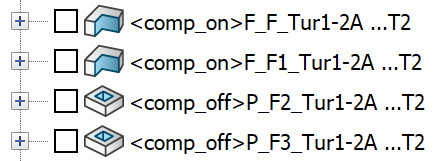
This option is also available in the CAM tree view submenu of the right-click menu on the Operations header.
Rest material\Chamfer

The Rest material option enables you to define parameters to remove the rest material left unmachined after previous operations.
The Chamfer option enables you to add chamfers to the edges of machined pockets.
Related Topics
